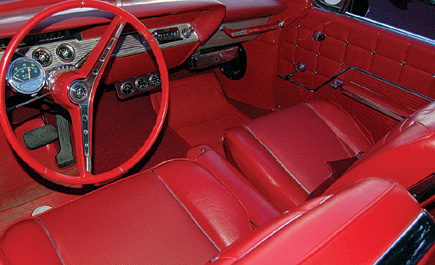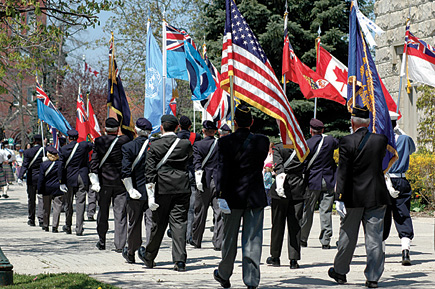Nikon’s D50; Surprisingly Affordable 6-Megapixel Camera, But How Does It Compare To The Nikon D70s? Page 2
 |
|
 |
|
|
PROS
· Solid build; ease of basic use but numerous features for full control
of many parameters
· Great speed and responsiveness, very fast/reliable autofocus, continuous
framing for up to 12 shots
· Images exhibit pleasing color rendition, moderately high sharpness,
and very good resolution of fine detail; digital noise and JPEG artifacts are
very well controlled
· Incredible value for tremendous versatility
CONS
· Relatively few analog controls; electronic menu can be daunting, with
many options, some less than intuitive
· Missing some useful D70s features
· LCD monitor makes images seem brighter than they are
· Extra cost software required (as with all Nikon digital SLRs) for raw
(NEF) file manipulation features
Nikon's D70s Vs. Nikon's D50
In spite of my rave review of the entry-level model, I preferred the D70s for
three reasons. One, its faster (3 vs. 2.5 fps) continuous framing rate was a
valuable benefit while shooting fast action. Two, when working in Manual mode,
I found the two (vs. one) input dials far more convenient. And finally, I appreciated
the depth of field preview control and the grid lines on the viewing screen
on the D70s. The latter are useful as an aid to composition and also provide
guidance for keeping both horizontal and vertical lines straight.
In my experience, the features mentioned earlier are the most important factors
in favor of the D70s for advanced photographers. Naturally, a high percentage
of digital SLR buyers may not fall into that category. Many will be fully satisfied
with the fast, versatile, and more affordable D50 during years of making great
digital photos. If you're still not sure which camera would be right for
you, study the comparison chart closely. Consider each item and evaluate its
importance--from high to very low--in your own photography to arrive
at a decision.
 |
|
|
35mm Transparency Films At A Glance |
||
Feature |
Nikon D70s |
Nikon D50 |
| Depth of field preview | Yes | Not available |
| Top shutter speed | 1/8000 sec | 1/4000 sec |
| Autofocus | AF-S, AF-C | Same, but adds AF-A (camera chooses continuous autofocus if subject motion is detected) |
| Matrix Metering | 3D Color Matrix with 1005-pixel RGB sensor for ambient light and flash | 3D Color Matrix II with 420-pixel RGB sensor |
| Spot Metering | Meters 2.3mm diameter (1 percent of frame) | Meters 3.5mm diameter (2.5 percent of frame) |
| Center-weighted Metering | Weighting of metered area is adjustable | Not adjustable; meters 75 percent (8mm diameter circle) of image area |
| Autoexposure Bracketing | Two or three frames in 1/3 or 1/2 EV increments |
Only three-frame option is available |
| Wireless Off-Camera Flash | Yes; allows for controlling multiple remote flash units (Commander mode) | Yes, but without multiple flash control |
| ISO Control | Selectable in 1/3 EV steps | Selectable in 1 EV steps |
| White Balance Control | Numerous options including Fine Tuning in Manual mode | Fine Tuning option not available |
| Custom Functions | 25 | 20 |
| Subject-Specific Program Modes | Seven, including Night Landscape | Seven, with Child Program instead of Night Landscape |
| Burst Mode | 3 fps top speed | 2.5 fps top speed |
| On-Demand Grid Lines | Available on screen | Not available |
| LCD Data Panel | Illuminated | Not illuminated |
| Other | Many analog controls; rugged body | Fewer analog controls; slightly less rugged |
| Remote Control Accessories | Optional ML-3 Wireless and Remote Cord MC-DC1 | Accepts only ML-3 Wireless |
| Memory Card | CompactFlash and Microdrive | Secure Digital |
| Connectivity | USB 2.0 Full Speed | Faster USB 2.0 Hi-Speed |
| Size/Weight | 4.4x5.5x3.1'; 21 oz. | 4x5.2x3'; 19 oz |
| Street Price | $899, body only; $1199 with highly rated 18-70mm f/3.5-4.5G ED IF AF-S DX Zoom | $649, body only; $799 with a small and convenient 18-55mm f/3.5-5.6G ED AF-S DX Zoom |
Technical Specifications
Nikon D50
Sensor: 23.7x15.6mm CCD; 6.1 megapixels effective
Lens Mount: Nikon AF; fully compatible with DX, Type G and
D AF lenses; extensive compatibility with AF Nikkor lenses (except 3D Color
Matrix Metering II); 1.5x focal length magnification factor
White Balance: Auto with 420-pixel sensor, six manual modes,
preset white balance and white balance bracketing
ISO Equivalent: ISO 200-1600
Operating Modes: Program with Program shift; seven subject-specific
Programs; Aperture and Shutter Priority AE; Manual
Shutter: Mechanical/CCD electronic; 30 seconds to 1/4000 sec
range; flash sync up to 1/500 sec
Flash: Built-in i-TTL flash with 420-pixel RGB sensor control,
pops up automatically in some modes; i-TTL flash also with SB-800 or 600; flash
exposure compensation in 1/3 or 1/2 EV increments; auto aperture flash with
SB-800; non-TTL flash with many Speedlights; distance priority manual flash
with SB-800; front and rear curtain sync; redeye reduction; slow sync selectable
Storage: Secure Digital card
Connectivity: USB 2.0 Hi-Speed; video output
Power: One rechargeable EN-EL3 li ion battery or optional AC
adapter
Dimensions/Weight: 5.2x4x3"; 1.2 lbs
Accessories Included: USB and video cable; strap; battery and
charger; eye cup; body, eyepiece, and hot shoe cap; Nikon PictureProject CD-ROM
Street Price: $649, body only
Final Assessment
Both novices and some photo enthusiasts will love the Nikon D50 for its versatility,
speed, and reliability. Others will gladly pay extra for the larger D70s in
order to get slightly more rugged construction and specific extra features that
they consider essential. There's really no wrong decision but the D50
clearly offers maximum value for the money. On the other hand, the D70s is more
of a serious shooter's camera that will expand to meet new needs and pay
dividends for a willingness to experiment with additional capabilities.
For more information, contact Nikon Inc., 1300 Walt Whitman Rd., Melville, NY
11747; (800) 526-4566, (631) 547-4200; www.nikonusa.com.
A long-time "Shutterbug" contributor, freelance stock photographer Peter K. Burian is the author of "Mastering Digital Photography and Imaging" (Sybex) and a digital photo course instructor with www.betterphoto.com.
- Log in or register to post comments

































